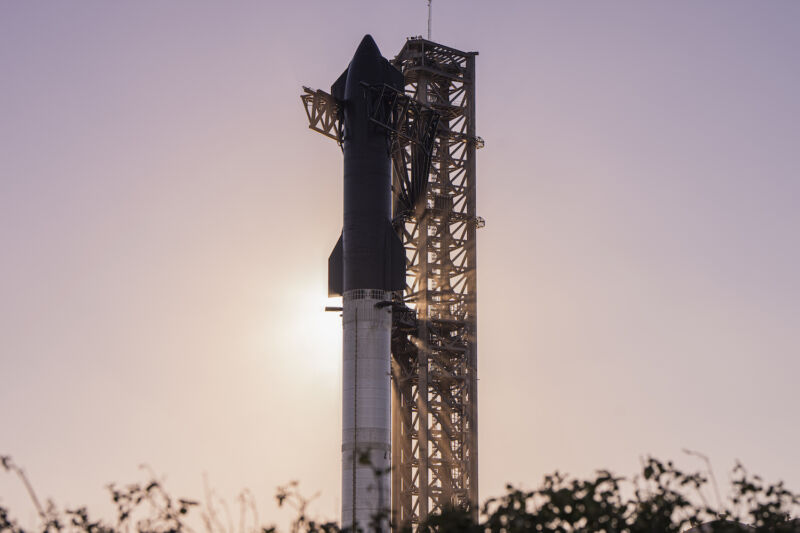What NASA wants to see from SpaceX’s second Starship test flight

Enlarge / SpaceX's Starship rocket on a launch pad in Texas awaiting liftoff on a test flight. (credit: SpaceX)
NASA managers are in South Texas this weekend as SpaceX prepares to launch its second full-sized Starship rocket. If the rocket flies perfectly, it will unlock additional tests beginning as soon as next year to prove that SpaceX can transfer hundreds of tons of super-chilled methane and liquid oxygen between two spaceships in orbit.
This is a fundamental part of the architecture SpaceX has designed to fly Starship missions beyond low-Earth orbit. With two NASA fixed-price contracts valued at more than $4 billion, SpaceX is on the hook to develop and fly two human-rated lunar landers based on the Starship design (and likely many more missions, assuming these first two work as advertised).
Depending on who you ask, SpaceX may need to launch a dozen or more refueling tankers to fill up the methane and liquid oxygen tanks on the Starship lunar lander, which will have emptied its tanks just to get into low-Earth orbit following launch on top of a Super Heavy booster. The Starship lander will use this fuel to boost itself out of low-Earth orbit toward the Moon, descend to the lunar surface with astronauts, and climb back into space to deliver the crew to their Earth return vehicle-an Orion spacecraft.